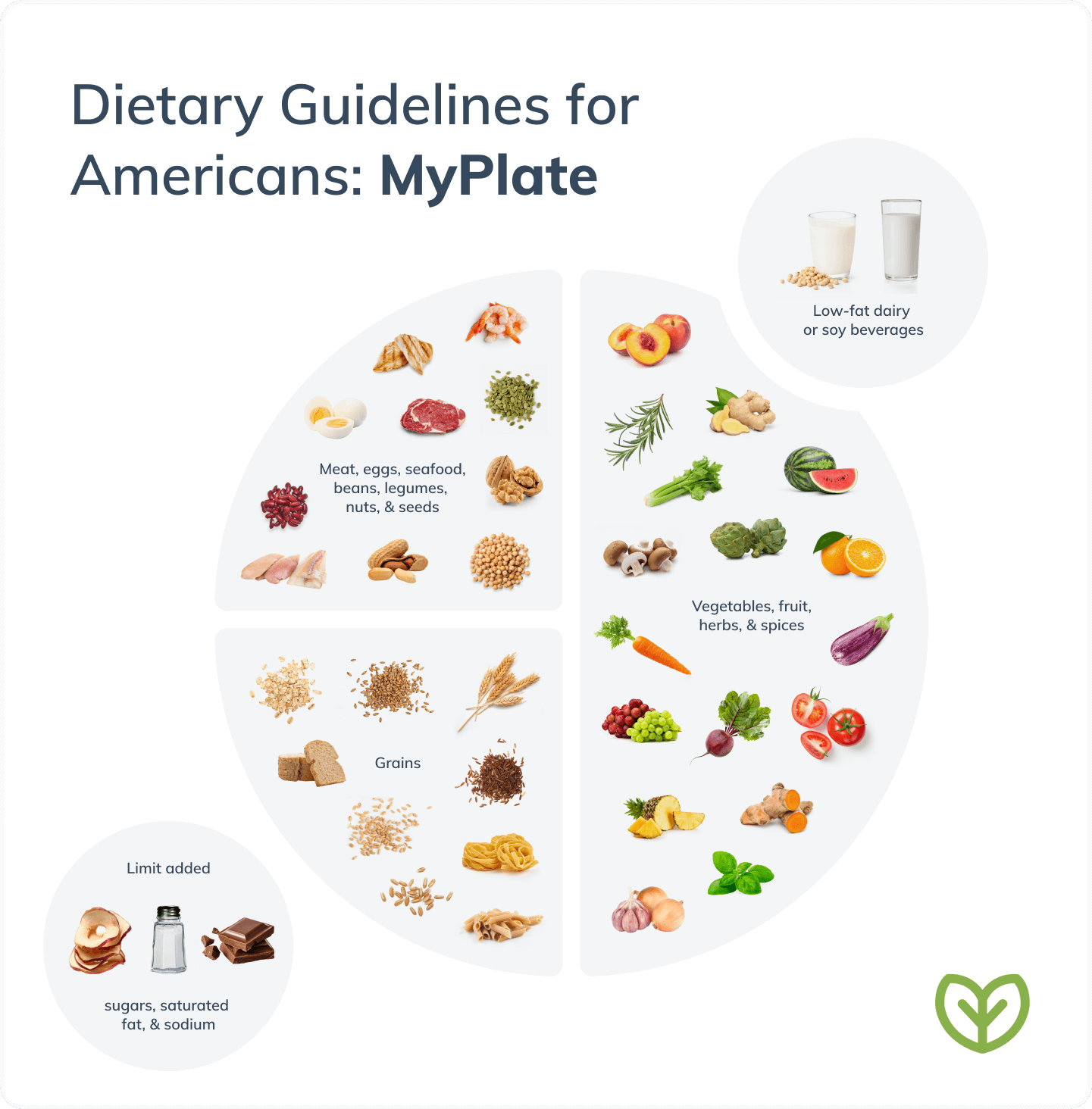More than 600 muscles in the human body make daily activities possible. Whether it’s mowing the lawn or walking the dog, strong muscles keep your body in motion. (19)
Most muscle mass is built throughout adolescence and maintained throughout adulthood. As individuals progress into older adulthood, sarcopenia (progressive muscle loss) may begin to decrease muscle strength. Sarcopenia is common in older adults and as the older population continues rising the World Health Organization (WHO) predicts the prevalence of sarcopenia will too. (16)
Sarcopenia can affect daily life. Individuals with sarcopenia have an increased risk of developing a chronic disease (e.g., depression, type 2 diabetes), an injury (e.g., fracture) or impaired mobility. (16)(21) Maintaining and building muscle mass with healthy dietary and lifestyle habits is the main way to address sarcopenia. (7)(25)
What is sarcopenia?
Sarcopenia is defined as loss of muscle mass coupled with loss of strength and physical function. (2) Sarcopenia symptoms can include:
- Balance problems
- Decreased mobility
- Difficulty walking or standing
- Fatigue
- Frailty
- Limited ability to engage in physical activity
- Poor endurance (18)(25)
Sarcopenia causes and risk factors
Sarcopenia most commonly affects older adults, beginning as early as 50 years old. Aging affects muscle function and mass in many ways, including:
- Decline of muscle-building (growth hormone)
- Loss of lean muscle mass and gain of body fat
- Slowed metabolism
- Slowed muscle protein synthesis (building of muscle fibers)
- Stiffer muscle tissue (1)(14)(25)
Did you know? Sarcopenia muscle loss becomes more prevalent with age, with up to 50% of individuals 80 years old or older having the condition. (30)
It’s important to consult with your integrative healthcare provider to learn more about sarcopenia and its risk factors. Many factors may contribute to the progression of sarcopenia, including:
- Chronic inflammation: Many chronic conditions lead to an inflammatory state that can negatively affect health. Examples include atherosclerosis, obesity, and type 2 diabetes. (25)
- Genetic factors: Certain genes may determine muscle mass and muscle strength (26)
- Inadequate nutrition: Not meeting calorie and nutrient requirements can contribute to loss of muscle mass.
- Sedentary lifestyle: Individuals who maintain an active lifestyle throughout life have more lean body mass and muscle mass when aged. (18)(22)

Adressing sarcopenia: treatment and prevention
Although sarcopenia is common, skeletal muscle weakness can lead to serious complications that can affect a person’s quality of life and ability to perform daily tasks. Broken bones, longer hospitalization stays, and an increased risk of obesity and osteoporosis (decreased bone density) are associated with muscle loss. (13)(18) Although there are many causes of muscle weakness, the progression of sarcopenia can often be slowed with healthy dietary and lifestyle habits.
Meet nutritional needs
Regardless of age, eating a variety of healthy foods is essential for achieving and maintaining good health and lowering your risk of developing chronic diseases, including severe sarcopenia. (12) The foundation of a healthy diet includes an array of nutrient-dense foods as opposed to processed and packaged foods. Nutrient-dense foods and beverages provide vitamins, minerals, and other health-promoting components (e.g., antioxidants, fiber, probiotics) while containing minimal amounts of added sugars, sodium (salt), and saturated fat. (8) Examples of nutrient-dense foods include:
- Beans and legumes
- Eggs
- Fat-free and low-fat dairy products
- Fruit
- Lean meat and poultry
- Nuts and seeds
- Vegetables
- Whole grains (8)
Determining calorie and nutrient needs depends on a variety of factors, including age, sex, height, weight, and activity level. However, consuming a variety of foods from every food group is a key piece of meeting nutritional needs. (8)(27) MyPlate is a visual food guide developed by the U.S. Department of Agriculture that can be used to help build healthy meals featuring nutrient-dense foods.

Prioritize protein-rich foods
Protein-rich foods contain a variety of amino acids, which help build muscle mass. Beans, legumes, eggs, lean meat, and poultry are protein-rich foods. Regularly consuming enough protein is vital for supporting muscle growth and function. (25)
Meeting nutrient needs through dietary sources is best; however, supplements may be used to address existing nutrient deficiencies or prevent nutrient deficiencies in individuals who are at risk. (11) Protein supplements, such as protein powder or protein-enhanced foods (e.g., protein bars), can be helpful tools to consume more daily protein and overall calories. Be sure to consult your integrative practitioner before introducing new supplements to your regimen.

Manage health conditions
Muscle breakdown can be accelerated by the adverse effects of various chronic conditions, such as insulin resistance, inflammatory bowel disease (IBD), and obesity. (12) Following your treatment plan for existing health conditions can help reduce their impact on muscle mass.
Increase physical activity
Resistance training and aerobic exercise are considered the most effective methods to combat muscle mass loss in older adults. (12)(16) Resistance training, such as weightlifting, involves using external weights to overload muscle fibers and make skeletal muscles stronger. (24) Aerobic exercise (cardio), on the other hand, is a physical activity that increases the heart rate and the body’s use of oxygen (breathing). (17) Activities such as walking, dancing, bicycling, or swimming are forms of aerobic exercise. (23)
Aerobic training is particularly beneficial for improving physical fitness (endurance) and keeping the cardiovascular, respiratory, and circulatory systems healthy. (20) Resistance exercise supports muscle strength, flexibility, and balance. (29)
According to the Physical Activity Guidelines for Americans, older adults should aim to exercise at least 150 minutes per week. This should include a combination of aerobic training, balance training, and resistance training. (28) Consult with your healthcare provider to learn more about appropriate physical activity goals.

Consider supplements
Older adults who have practiced resistance training for most of their life are still susceptible to muscle and strength loss. (4) Supplements commonly used in the sports industry to support muscle growth have demonstrated a potential role in the treatment of sarcopenia.
Creatine
Creatine is a compound naturally produced within the body from chemical reactions involving amino acids (molecules that make up protein) in the liver or kidneys. Creatine can also come from the diet, mainly poultry, red meat, and seafood, or supplements. About 95% of creatine is stored in skeletal muscle and plays an essential role in the body’s ability to produce energy for muscle power and contraction. (5) Creatine may also stimulate a variety of genes related to muscle growth, which may increase muscle growth capacity. Creatine also has antioxidant properties that may contribute to its role in managing sarcopenia, as oxidative stress is associated with the progression of sarcopenia. (5)(9)(10)
Creatine supplementation is most effective when combined with regular resistance exercise. Because creatine increases the muscle’s capacity to work, research indicates creatine supplementation may improve muscle strength and growth more than resistance training alone. (6) Contact your integrative healthcare provider to learn more about creatine and its role in managing sarcopenia.
Whey protein
Protein is the only macronutrient used for energy and as a functional compound in organs, tissues, and cells. Whey protein is extracted from cow’s milk and is well-known for its high digestibility, rapid absorption, and abundance of essential amino acids. Regularly taking a whey protein supplement has been shown to support muscle mass and growth in younger and older adults. Whey protein has also demonstrated positive effects for managing body weight, blood pressure, and oxidative stress. Similar to creatine, supplementing with whey protein is most effective when combined with regular exercise. (15)
The bottom line
Aging can slow muscle growth, potentially impacting muscle mass and strength. Severe sarcopenia can lead to serious complications affecting daily life. Certain factors, such as having a sedentary lifestyle, can increase the risk of developing severe sarcopenia. Maintaining muscle mass and strength through exercise is one of the most effective ways to address sarcopenia. To learn more about muscle strength and sarcopenia treatment, consult with your healthcare provider.
- American Academy of Orthopedic Surgeons. (2009). Effects of aging. Ortho Info. https://orthoinfo.aaos.org/en/staying-healthy/effects-of-aging/
- Bauer, J., Morley, J. E., Schols, A. M. W. J., Ferrucci, L., Cruz-Jentoft, A. J., Dent, E., Baracos, V. E., … & Anker, S. D. (2019). Sarcopenia: a time for action. Journal of Cachexia, Sarcopenia and Muscle, 10(5), 956–961.
- Benedetti, M. G., Furlini, G., Zati, A., & Letizia Mauro, G. (2018). The effectiveness of physical exercise on bone density in osteoporotic patients. BioMed Research International, 2018, 4840531.
- Candow, D. G. (2011). Sarcopenia: current theories and the potential beneficial effect of creatine application strategies. Biogerontology, 12(4), 273–281.
- Candow, D. G., Forbes, S. C., Chilibeck, P. D., Cornish, S. M., Antonio, J., & Kreider, R. B. (2019). Effectiveness of creatine supplementation on aging muscle and bone: focus on falls prevention and inflammation. Journal of Clinical Medicine Research, 8(4).
- Candow, D. G., Forbes, S. C., Kirk, B., & Duque, G. (2021). Current evidence and possible future applications of creatine supplementation for older adults. Nutrients, 13(3).
- Cruz-Jentoft, A. J., Bahat, G., Bauer, J., Boirie, Y., Bruyère, O., Cederholm, T., Cooper, C., … & Writing Group for the European Working Group on Sarcopenia in Older People 2 (EWGSOP2), and the Extended Group for EWGSOP2. (2019). Sarcopenia: revised European consensus on definition and diagnosis. Age and Ageing, 48(1), 16–31.
- Dietary guidelines for Americans (2020-2025). (2020). https://www.dietaryguidelines.gov/
- Dolan, E., Artioli, G. G., Pereira, R. M. R., & Gualano, B. (2019). Muscular atrophy and sarcopenia in the elderly: is there a role for creatine supplementation? Biomolecules, 9(11).
- Gilmartin, S., O’Brien, N., & Giblin, L. (2020). Whey for sarcopenia; can whey peptides, hydrolysates or proteins play a beneficial role? Foods (Basel, Switzerland), 9(6).
- Health Canada. (2019). A consumer’s guide to the DRIs (Dietary Reference Intakes). https://www.canada.ca/en/health-canada/services/food-nutrition/healthy-eating/dietary-reference-intakes/consumer-guide-dris-dietary-reference-intakes.html
- Hollingworth, T. W., Oke, S. M., Patel, H., & Smith, T. R. (2021). Getting to grips with sarcopenia: recent advances and practical management for the gastroenterologist. Frontline Gastroenterology, 12(1), 53–61.
- Hunter, G. R., Singh, H., Carter, S. J., Bryan, D. R., & Fisher, G. (2019). Sarcopenia and its implications for metabolic health. Journal of Obesity, 2019, 8031705.
- Keller, K., & Engelhardt, M. (2013). Strength and muscle mass loss with aging process. Age and strength loss. Muscles, Ligaments and Tendons Journal, 3(4), 346–350.
- Liao, Y., Peng, Z., Chen, L., Zhang, Y., Cheng, Q., Nüssler, A. K., Bao, W., Liu, L., & Yang, W. (2019). Prospective views for whey protein and/or resistance training against age-related sarcopenia. Aging and Disease, 10(1), 157–173.
- Mcleod, J. C., Stokes, T., & Phillips, S. M. (2019). Resistance Exercise Training as a Primary Countermeasure to Age-Related Chronic Disease. Frontiers in Physiology, 10, 645.
- National Cancer Institute. (n.d.-a). Aerobic exercise definition. NCI Dictionary of Cancer Terms. https://www.cancer.gov/publications/dictionaries/cancer-terms/def/aerobic-exercise
- National Cancer Institute. (n.d.-b). Sarcopenia defintion. NCI Dictionary of Cancer Terms. https://www.cancer.gov/publications/dictionaries/cancer-terms/def/sarcopenia
- National Institute of Arthritis and Musculoskeletal and Skin Diseases. (2020). Healthy muscles matter. https://www.niams.nih.gov/health-topics/kids/healthy-muscles
- National Institutes of Health. (2020). Exercise and physical fitness. MedlinePlus; National Library of Medicine. https://medlineplus.gov/exerciseandphysicalfitness.html
- Pacifico, J., Geerlings, M. A. J., Reijnierse, E. M., Phassouliotis, C., Lim, W. K., & Maier, A. B. (2020). Prevalence of sarcopenia as a comorbid disease: a systematic review and meta-analysis. Experimental Gerontology, 131, 110801.
- Papadopoulou, S. K. (2020). Sarcopenia: a contemporary health problem among older adult populations. Nutrients, 12(5).
- Patel, H., Alkhawam, H., Madanieh, R., Shah, N., Kosmas, C. E., & Vittorio, T. J. (2017). Aerobic vs anaerobic exercise training effects on the cardiovascular system. World Journal of Cardiology, 9(2), 134–138.
- Phillips, S. M., & Winett, R. A. (2010). Uncomplicated resistance training and health-related outcomes: evidence for a public health mandate. Current Sports Medicine Reports, 9(4), 208–213.
- Santilli, V., Bernetti, A., Mangone, M., & Paoloni, M. (2014). Clinical definition of sarcopenia. Clinical Cases in Mineral and Bone Metabolism: The Official Journal of the Italian Society of Osteoporosis, Mineral Metabolism, and Skeletal Diseases, 11(3), 177–180.
- Tan, L.-J., Liu, S.-L., Lei, S.-F., Papasian, C. J., & Deng, H.-W. (2012). Molecular genetic studies of gene identification for sarcopenia. Human Genetics, 131(1), 1–31.
- U.S. Department of Agriculture. (2021). Back to basics: all about MyPlate food groups. https://www.usda.gov/media/blog/2017/09/26/back-basics-all-about-myplate-food-groups
- U.S. Department of Health and Human Services. (2018). Physical activity guidelines for Americans 2nd edition. https://health.gov/our-work/nutrition-physical-activity/physical-activity-guidelines/current-guidelines
- Victoria Department of Health. (n.d.). Resistance training – health benefits. Better Health Channel. https://www.betterhealth.vic.gov.au/health/healthyliving/resistance-training-health-benefits
- von Haehling, S., Morley, J. E., & Anker, S. D. (2010). An overview of sarcopenia: facts and numbers on prevalence and clinical impact. Journal of Cachexia, Sarcopenia and Muscle, 1(2), 129–133.





